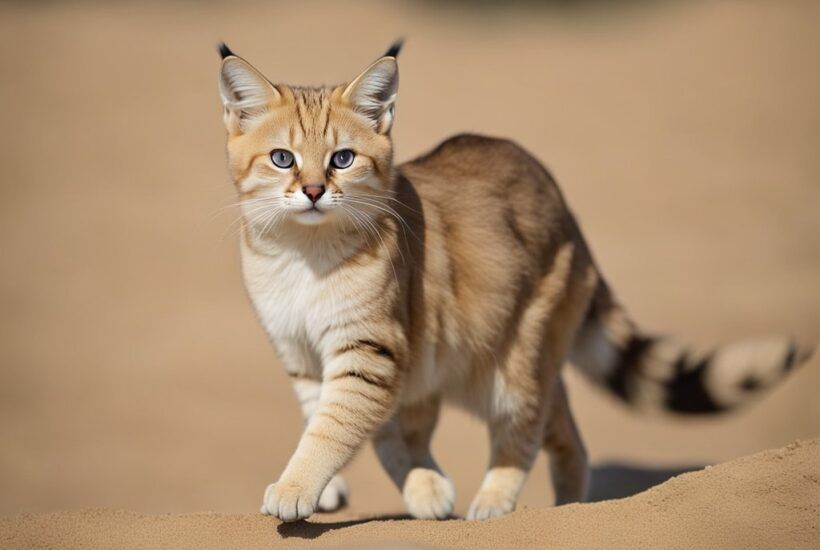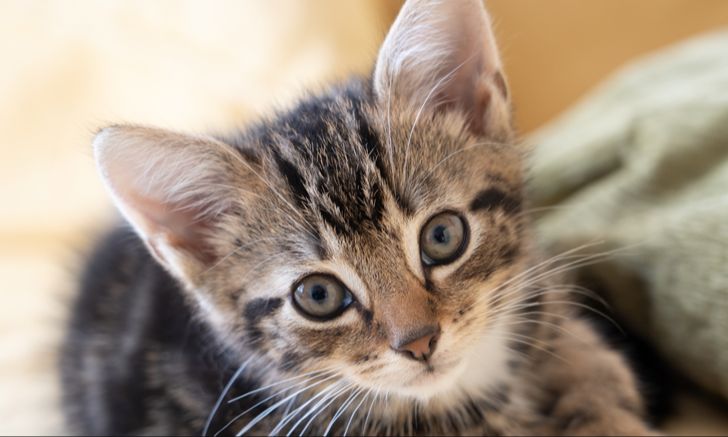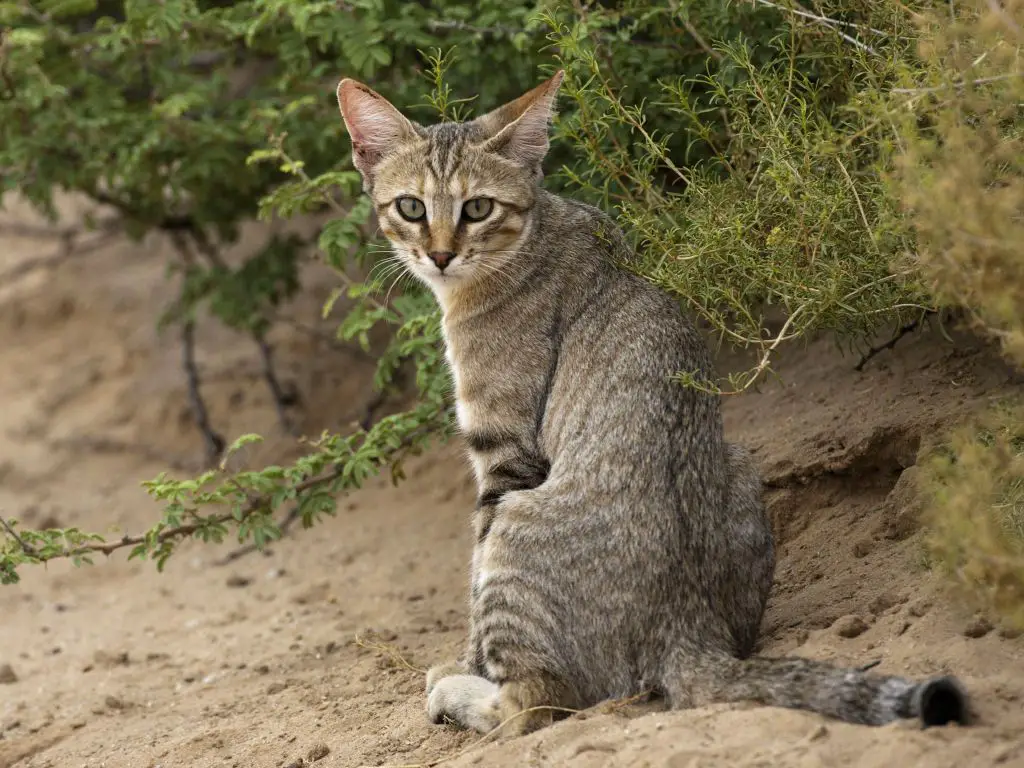Physical Adaptations

Cats have evolved many physical adaptations that help them thrive in their environments. Their fur comes in a variety of colors like tabby, black, white, ginger, tortoiseshell and more, which helps camouflage them while hunting prey (Bioweb). Their claws are sharp, curved and retractable, allowing cats to climb trees and latch onto prey (ThoughtCo). Cats have flexible bodies and loose skin that enables them to squeeze into tight spaces. Their whiskers are highly sensitive tactile hairs that help cats detect objects and navigate in the dark. Cats have excellent night vision thanks to a reflective layer in their eyes called the tapetum lucidum. They also have a powerful sense of smell that aids their hunting.
Hunting Adaptations
Cats are skillful hunters with many adaptations that help them stalk and kill prey. One such adaptation is their ability to stalk prey carefully and quietly. Cats usually approach their prey by stalking, which involves the cat being in a crouched position, with their head outstretched. They move slowly and silently on their padded paws to get within striking distance without alerting their prey [1].
Another key hunting adaptation is their ability to pounce powerfully. Cats are able to gather their hind legs beneath them and spring with explosive speed and power, launching themselves high into the air to pounce on their prey before it can react or escape [2]. Their strong back legs provide the power for these impressive vertical leaps.
In addition, cats have sharp teeth and retractable claws that allow them to seize prey and deliver killing bites. Their teeth are adapted for piercing, gripping, and tearing flesh. And their claws are retractable, staying sharp and ready to hook prey. These physical adaptations make cats effective hunters and killers.
Cats also possess quick reflexes that aid their hunting. They can twist, dodge, and react with lightning speed while on the hunt. Their flexible bodies, fast reflexes, and ability to make rapid course corrections mid-pounce all contribute to their prowess as hunters [3].
Communication Adaptations
Cats have developed complex ways of communicating with each other using vocalizations, body language, facial expressions, and scent marking.1
Some of the main vocalizations cats use to communicate include meowing, purring, hissing, growling, chirping, and howling. Meowing is often used to get human attention but cats also meow at each other as a greeting. Purring expresses contentment and can be used as a healing mechanism. Hissing, growling, and howling are warnings or threats. Chirping is a friendly vocalization cats use with each other.2
Cats rely heavily on body language and facial expressions to communicate how they are feeling. Erect ears facing forward signal interest and alertness while ears flattened back can indicate an aggressive or fearful mood. Slow blinking of the eyes is a friendly gesture. Wrapping the tail around another cat can be a sign of affection. Arching the back, swishing the tail, and standing on tiptoes are all signs a cat may be feeling threatened or defensive.
Scent marking by rubbing, scratching, and urine spraying is another important communication method for cats. It allows them to claim territory and identify other cats.
Environmental Adaptations
Cats have adapted well to a variety of environments and climates thanks to their flexible behavior and physiology. In desert environments, cats conserve water by lapping up liquids with their tongues rather than gulping water like dogs do. Their kidneys are also highly efficient at retaining water from urine. In colder climates, cats grow thick coats to insulate them from the cold. Their fur provides insulation and cats will curl up into tight balls to conserve body heat. In jungle environments, cats have excellent climbing abilities to navigate the tree canopy. Their claws allow them to scale trees with ease. Even the pattern of a cat’s fur provides camouflage to blend in with the dappled light and shadows of the jungle. In urban environments, cats are able to live closely with humans and other pets. They can adapt to small spaces in apartments and homes. Cats are territorial animals but can adjust their territory size based on their environment. Feral cats in cities are able to survive by hunting rodents and scavenging human food waste (http://bioweb.uwlax.edu/bio203/s2009/aschenbr_rach/Adaptations.htm).
Domestication Adaptations

Cats have undergone many behavioral and physical adaptations that have allowed them to thrive in human homes. One key adaptation is their ability to become socialized to humans from a young age. Kittens have a sensitive period for socialization between 2-7 weeks old, during which positive experiences with humans leads to a lifetime of trust and bonding (Scientific American, 2009). This allows cats to develop close relationships with their human companions.
Another adaptation is cats’ ability to use a litter box. This makes indoor living with humans hygienic and practical. Cats have a natural instinct to eliminate in loose, sandy soils which facilitates the transition to using litter boxes (NBC News, 2014). Their litter box habits help them smoothly adapt to being indoor pets.
Cats have also adapted their communication style to better interact with humans. They have evolved to use vocalizations, body language, and social behaviors that align well with human communication. For example, cats purr during pleasant interactions, arch their backs when threatened, and rub against legs to show affection (Scientific American, 2015). This allows for better bonding and relationships with their human companions.
Behavioral Adaptations
Cats have many behavioral adaptations that help them survive in their environments. Some key behavioral adaptations relate to exploring, curiosity, play, and grooming.
Cats are natural explorers and show intense curiosity about their surroundings. This helps them become familiar with their territory and learn the location of food sources, water, shelter, and potential threats [1]. Their investigative nature also aids hunting, as cats thoroughly explore areas to find prey.
Play is another important behavioral adaptation in cats. Kittens play to practice skills like pouncing, chasing, and fighting. This helps develop muscles and coordination needed for hunting. Play also teaches kittens hunting behaviors through instinct. Additionally, play activities with other cats can help establish social bonds and hierarchies [2].
Grooming serves several purposes for cats. Licking and scratching keep fur clean and free of debris. This maintains insulation and camouflage. Grooming also distributes scent from glands around the mouth, face, and paws. Scent marking communicates information about identity, social status, and territory ownership.
Cognitive Adaptations
Cats have excellent cognitive abilities that allow them to adapt and thrive in their environments. Their intelligence manifests in various ways such as problem-solving, learning, memory, and spatial awareness.
Cats are adept problem solvers, able to figure out solutions to novel situations like how to open doors or get treats out of puzzles 1. Their learning capacity is evidenced by their ability to be trained and to retain that training over time. Cats also have good long-term memory, allowing them to remember important information like where food and water sources are located 2.
Spatial awareness is a key cognitive skill for cats as hunters. They are very observant of their surroundings and can map spaces efficiently in their mind, allowing them to navigate complex environments and track prey movement 3. Their mental mapping helps them return to favored spots and avoid unpleasant areas.
In summary, cats exhibit strong cognitive abilities like problem-solving, learning, memory, and spatial mapping that enable them to adapt successfully within their ecological niches.
Lifestyle Adaptations

Cats are typically nocturnal or crepuscular, meaning they are most active at night or during twilight hours. This is an adaptation to help them hunt small prey like mice or birds that are also active at night. Cats have excellent night vision which allows them to see well in low light conditions (The Inner Life of Cats).
While often solitary hunters, cats are also capable of forming social groups and colonies when resources permit. Feral cats will congregate in areas where food and shelter are abundant, forming larger social groups. However, cats do not have rigid social hierarchies like dogs or wolves. They are still able to adapt to solitary or social lifestyles as needed (The Social Structure of Cat Life).
Domestic cats are known to take on the habits and schedules of their human owners, such as becoming more active during the day. Cats can readily adapt their natural nocturnal tendencies to match a more diurnal lifestyle in a human home (Cats Take on Owners’ Habits). Their ability to be both solitary hunters and social with humans demonstrates the adaptable nature of cats.
Physiological Adaptations
Cats have several key physiological adaptations that allow them to thrive in a wide range of environments and situations. One of the most notable is their flexible and varied diet. Cats are obligate carnivores, meaning they require a diet of primarily meat and protein to survive (1). However, cats can adapt to consume a wide range of prey, from small rodents to birds and even insects. Their short intestinal tract and acidic digestive system allow them to process and extract nutrients efficiently from different types of animal proteins. Cats also have a low thirst drive and highly concentrated urine to aid in water conservation (1). This is an adaptation for survival in arid environments where free-standing water may not be readily available. Cats are also well adapted for temperature regulation. They can conserve heat by curling up tightly and insulating their body surface area. Cats also pant to cool themselves on hot days. Their fur provides insulation to aid with both heat retention and cooling.
Evolutionary Adaptations

Cats have undergone significant evolutionary adaptations over thousands of years to thrive in various environments. According to Scientific American, cats likely descended from desert-dwelling wildcats that inhabited the Fertile Crescent region about 10,000 years ago (https://www.scientificamerican.com/article/how-house-cats-evolved/). These ancestral cats were solitary hunters that eventually migrated out of the region and spread across Africa, Europe and Asia.
A key evolutionary adaptation was the domestication of cats, beginning around 9,500 years ago in the Near East. As humans transitioned to more agricultural societies, rodents were attracted to grain stores, creating an ecological niche that wildcats could fill as natural pest control. Cats adapted to take advantage of this abundant food source in close proximity to human settlements. Over time, selective breeding led to genetic changes that made cats more amenable to domestication, such as increased docility, dependency on humans, and ability to digest starch (https://www.scientificamerican.com/article/the-taming-of-the-cat/).
Other evolutionary adaptations in domestic cats include their small size compared to wildcats, more social nature, vocalizations, and behavioral traits that allow cohabitation with humans. Additional adaptations continue as cats adapt to new environments around the world and selective breeding leads to new breeds and hybrids.

